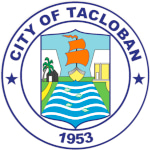Tacloban Day in the Philippines Date in the current year: June 30, 2026
 Tacloban Day (Araw ng Tacloban) is a special non-working holiday in the city of Tacloban, Philippines celebrated annually on June 30. It commemorates the feast day of the city’s patron saint, Señor Santo Niño, as well as the cityhood anniversary of Tacloban.
Tacloban Day (Araw ng Tacloban) is a special non-working holiday in the city of Tacloban, Philippines celebrated annually on June 30. It commemorates the feast day of the city’s patron saint, Señor Santo Niño, as well as the cityhood anniversary of Tacloban.Tacloban is a highly urbanized city on the island of Leyte. It is the regional center of the Eastern Visayas region of the Philippines and the provincial capital of Leyte, governed and administered independently from the province.
The first Europeans to arrive in the area were the Jesuits in the 17th century. They left in 1768, and the Augustinians from Cebu took over in 1770. They established a chapel (the predecessor to the present-day Santo Niño Church) in a small fishing village that would eventually grow to become the city of Tacloban and dedicated it to the Child Jesus (Santo Niño), who became the heavenly patron of the settlement.
The original name of the village was Kankabatok, which means “the property of Kabatok” (the original indigenous inhabitants of the area). At some point it was renamed Tacloban from the word taklub, which means a basket-like bamboo contraption local fishermen used to catch fish, crabs, and shrimp. Tacloban became a municipality sometime in the 1770s and was designated as the provincial capital of Leyte in 1830.
Following the defeat of the Philippines in the Philippine-American War and the establishment of the new American administration, the port of Tacloban was opened to world commerce, which contributed to the rapid development of the town. Tacloban suffered a heavy hit in 1912, when it was practically destroyed by a typhoon that killed nearly half of its population. However, the surviving residents soon started to rebuild.
In May 1942, Tacloban was occupied by the Japanese Empire. During the occupation, it served as a port of call and entry for the Japanese Imperial Naval Forces. The combined American and Filipino forces led by General MacArthur liberated Tacloban in October 1944. The town briefly served as the temporary capital of the Philippines until the country’s liberation.
After the end of the war and the independence of the Philippines, Tacloban continued to grow and develop. It was granted cityhood on June 20, 1952 and was classified as a highly urbanized city on December 18, 2008. In 2013, Tacloban was heavily hit by Typhoon Haiyan; two years later, Pope Francis arrived in the city to celebrate mass with the survivors of the typhoon.
The celebration of Tacloban Day is linked to the city’s patron saint. For several decades in the 19th century, the image of the Señor Santo Niño de Tacloban was thought to has been lost. According to legend, the lost image arrived at the local port on June 30, 1889, amid a cholera epidemic. Its arrival is believed to have miraculously ended the cholera outbreak. The anniversary of the miracle is celebrated as the feast day of the Señor Santo Niño de Tacloban and has been designated as Tacloban Day.
The annual celebration of Tacloban Day includes a solemn mass at the Santo Niño Church and various cultural events and activities organized by the city government, religious groups, civic organizations, non-governmental organizations, private businesses, and other stakeholders.
- Category
- Anniversaries and Memorial Days
- Country
- Philippines
- Tags
- Tacloban Day, holidays in the Philippines, regional observances, special non-working holidays, Señor Santo Niño